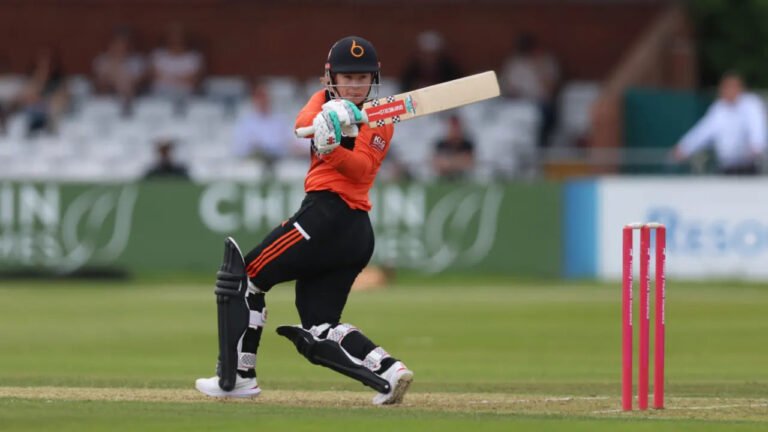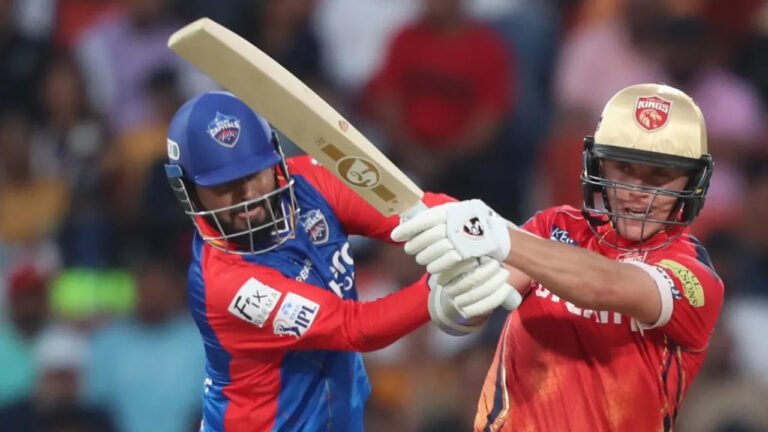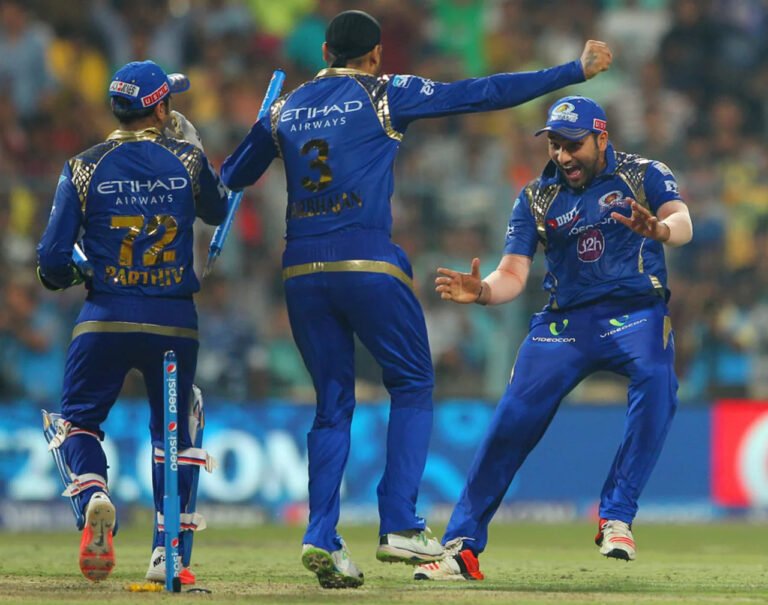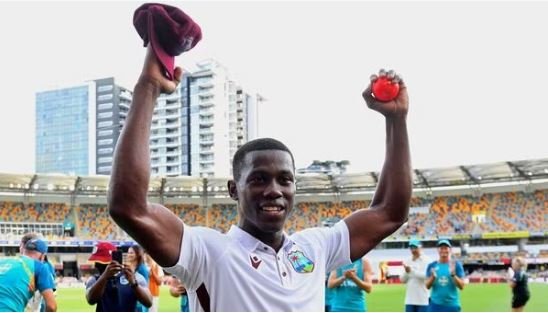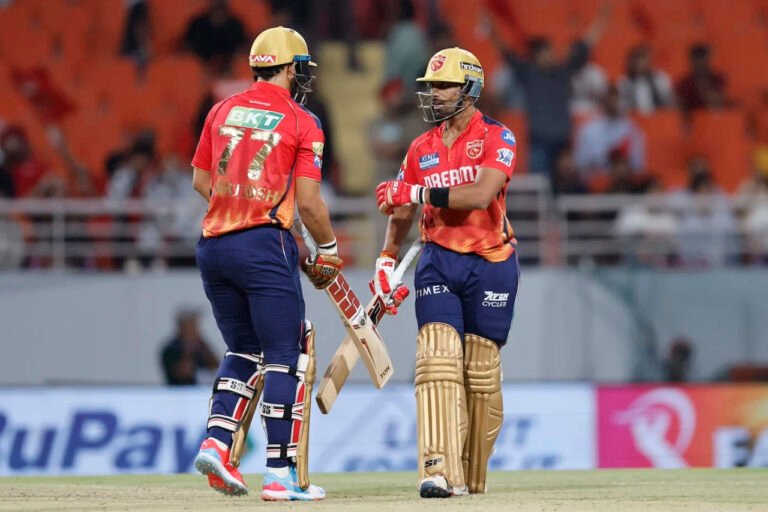West Indies Secure First T20 World Cup Title in 2012: A Recap of Marlon Samuels’ Heroics
The West Indies cricket team clinched their first World Twenty20 title since 1979. The match, marked by outstanding performances from Marlon Samuels and Darren Sammy, saw the West Indies triumph over Sri Lanka by 36 runs in a historic match on October 7, 2012.
Marlon Samuels, with his sensational innings of 78 runs, played a pivotal role in turning the game around for the West Indies. Despite a challenging start, Samuels’ aggressive batting style and strategic shots steered the team to victory. His partnership with captain Darren Sammy, who contributed 26 crucial runs, proved instrumental in securing the win.
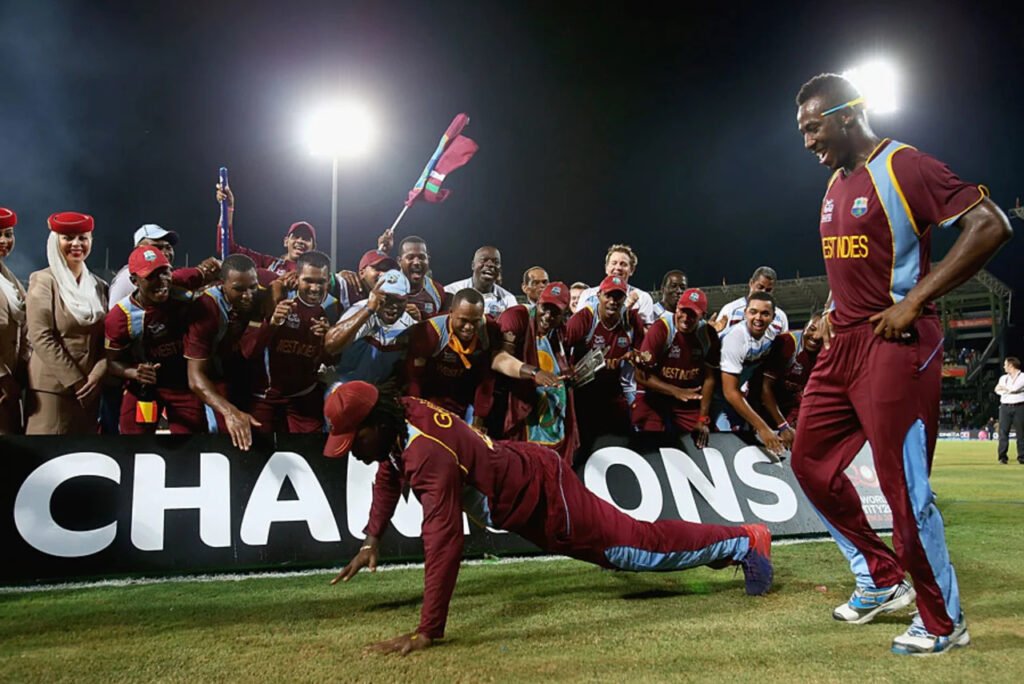
Sri Lanka 101 (Jayawardene 33, Kulasekara 26, Narine 3-9, Sammy 2-6) was defeated by West Indies 137 for 6 (Samuels 78, Sammy 26*, Mendis 4-12) by a margin of 36 runs.
The West Indies’ first World Twenty20 victory was more about sticking with it, not giving up, and playing the game like their life depended on it. They also amazed the home fans by pulling off one of the most incredible comebacks in Twenty20 history, especially considering the circumstances.
One of the most visually appealing batsmen in the game contributed the appropriate amount of flair. “One of the” doesn’t belong here because, with the West Indies down and the count at roughly eight, Marlon Samuels performed the greatest Twenty20 international innings ever witnessed. A commenter on the ball-by-ball commentary questioned if Samuels’ 78 was the 281 in Twenty20 cricket.
Samuels was not merely waving from the flaming deck for assistance. On that blazing deck, he danced. His dancing was so good that it made the flaming deck look good. And they smacked Sri Lanka. So bad that the world’s top Twenty20 bowler, without a doubt, went for 0 for 54. So much so that Ajantha Mendis’s 4 for 12 final performance had little bearing on the outcome.
West Indies have registered the fourth and fifth worst scores at these times in Twenty20 international history, respectively, at 14 for 2 after Powerplays and 32 for 2 after 10 overs. To score their first run off the bat, it even took them 17 balls. Despite the wickets dropping all around him, Samuels’ attack was so amazing that Sri Lanka was unable to react in time.
In a way, it’s also fair to say that skipper Darren Sammy made a major contribution to the victory. That on the final night of a competition that had threatened to render him all but unnecessary, the man who has guided the team through moments when others have abandoned it, despite evident doubts about his abilities, played a critical part… In the eighteenth over, West Indies were still 108 when Samuels was removed. They needed to fight to the very end. And Sammy got into a brawl. In the final over, he swung and ran like crazy, hitting two fours around those scrambles and turning three ones into twos.
Maybe it was a touch too simple to continue after Samuels’s blow. Malinga had returned to attempt to deliver the knockout blow when Samuels struck. Samuels launched a stunning counteroffensive. In the thirteenth over, Samuels dazzled Malinga with three of the best sixes: a flick over deep midwicket, a loft over long-on, and a gorgeous drive over extra cover. Malinga only needed to miss his yorker by a few inches. After 13, it was still just 69 for 2, but it helped the West Indies show fight.
Jayawardene wished to break up that conflict right now. After he brought back Ajantha, he retaliated by getting rid of Dwayne Bravo, Andre Russell, and Kieron Pollard in his final two overs. Surely Jayawardene had overlooked everything?
Not exactly. During those two overs, Samuels persisted in his attack, dismantling Jeevan Mendis. The man regarded as the finest bowler in Twenty20 cricket then took his turn. Samuels got a length ball after hitting Malinga for a four and a six, and he launched it onto the stadium roof for the largest six of the competition (108 meters).
Also Read: Carlos Brathwaite’s Epic 6, 6, 6, 6 Sequence: West Indies’ World T20 Triumph vs England
During the intermission, Angelo Mathews stated that the West Indies were still 15–20 short. Maybe they were, but that assault had a tremendous amount of momentum—105 in the last ten. A brilliant opening delivery from Ravi Rampaul sent Tillakaratne Dilshan’s off stump cartwheeling, as if Sri Lanka weren’t already far out of control. He put his finger to his lips. But the throng had already gone silent in shock.
Now, like the West Indies openers, two of Sri Lanka’s finest players were in the middle, but they were also under pressure. Would they have considered the three World Cup finals they had lost in the past? In today’s cricket, Jayawardene is the best player at the sweep stroke, but he was too early and almost gifted Samuels a wicket in his opening over.
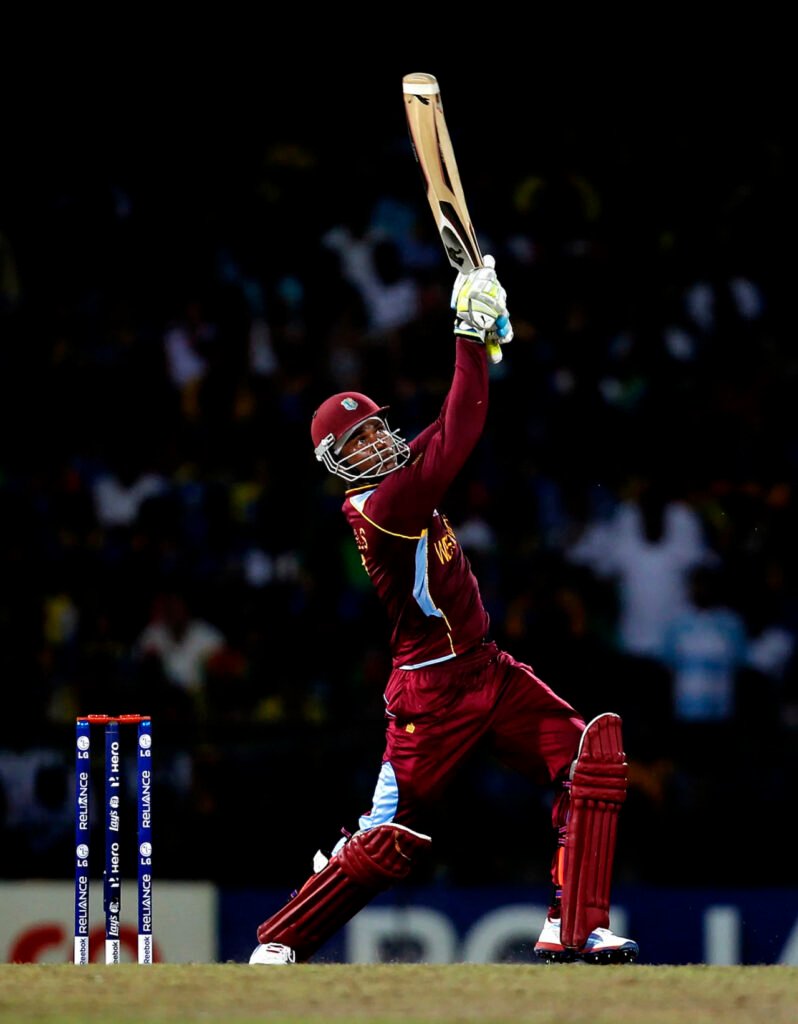
Even with subpar pitches, Kumar Sangakkara continued to knock them straight to fielders. West Indies persisted in applying increasing pressure.
Because of the rapidity of Twenty20, Sri Lanka found themselves at 39 runs after just eight overs. Although they still had wickets remaining, wickets are not as important in T20 as they are in other formats. Above all, Sunil Narine had demonstrated in one over that he could turn the ball a long way. Sri Lanka needed to target someone since they were running out of time.
In addition to hitting a four, Sangakkara also placed a long hop with deep midwicket, aimed for Samuel Badree. Now Sammy gave it another squeeze. Mathews realized he had spoken too soon. After three dots, he crossed over and the stumps were in a prone position. Sammy swung a slower ball at them. It started to drizzle now. At this point, Sri Lanka was well behind D/L, and Jayawardene needed to take chances. Jayawardene, who never really put forth any effort, misplayed a reversal shot and fouled out to point.
Nuwan Kulasekara was merely a small annoyance to the festivities that the entire globe had been anticipating after that. Gayle was the man dancing the hardest with each wicket that fell, even though he only managed to score three runs out of sixteen. Additionally, he was the first to put his arm around Rampaul, who, towards the end of the piece, bowled an average over just as remarkable as his first wicket.
In a T20 match, Sri Lanka required 44 from four overs following that 22-run over. But Sammy had held onto the trump card. Kulasekara’s wicket was given on cue by Narine. Bravo, the birthday kid, was the one at the end of the two catches that ended the match, having received a stunner from the umpire when he batted.
Now was the time to celebrate, and the West Indies did not disappoint with their after-hours festivities.
Another Final Heartbreak for Sri Lanka
It’s difficult to comprehend a loss this strange for Sri Lanka. The squad needs to take stock of their current situation even though their voyage thus far may have served as a good springboard for the future.
It was hard not to smile when we entered the R Premadasa stadium on Sunday afternoon after passing through the Khettarama neighborhood. In an attempt to reduce traffic, police had blocked off the streets leading into the grounds, but the locals interpreted this as permission to start the street celebration early.
Sri Lankan flags were strung over every balcony and awning, face painting booths and popcorn shops were decorated in blue and yellow, stereos were set up along the roadway playing everything from baila to Western music, and men were dancing with children. It was meant to be the warm-up act, the prelude to the festivities that would last all night.
Those same streets were empty eight hours later. Nothing but the deep disappointment that only silence can express—no riots, no fury. “Victory to Sri Lanka” signs in Sinhala were still fluttering between the lampposts they had been fastened to. Nobody had the motivation to take them out. Over the past few days, Sri Lanka had erupted into a cricket frenzy, but their hopes have now burned down even faster. The nation now awakens to a state of doom and uncertainty, along with questions devoid of simple solutions.

How do you explain such an odd loss? Of a group that fashioned their campaign of newly discovered fortitude, giving it up so freely? For more than half of their innings, they had trussed up Chris Gayle and choked the top order of the West Indies. At one point, the hosts were so strong that their supporters may have been relieved by Malinga’s costly 13th over. After all, defeating a deserving foe is more rewarding.
How can one reconcile the idea that a captain who is so well-known for his cunning would send out his worst bowler of the night to get destroyed in his allotted overs? How did Sri Lanka’s batters collapse so badly that just three players out of them scored more than ten runs, considering that West Indies had only been able to remove Tillakaratne Dilshan from the game during the Super Eights and the pre-tournament practise?
What is perhaps more concerning is the reason behind Sri Lanka’s incapacity to make the decisive move to win a title. Following the game, Mahela Jayawardene asserted that there was no common thread among the four finals defeats, and he might have a point considering the caliber of the winners on each of the other three occasions. But maybe this loss will hurt the most since it comes against a home audience that is desperate and because they have gone so darkly through the tournament. It won’t be possible for Sri Lanka to hold a major event for at least ten more years.
According to Jayawardene, “It hurts a lot.” “You want to do something extraordinary, which is why it aches. not just for each of us individually, but also for the whole public. Despite our strong cricket play, we haven’t been able to get over that obstacle. It pains a lot to be a cricket player. We must go on, see how successfully we can get past this, pick up the pieces, and resume our struggle.”
In the most important match, Sri Lanka suddenly lost the courage that had characterized their campaign. It appeared as though they had given their best in the semifinal scrap against Pakistan. When Marlon Samuels and Darren Sammy bowled hard, the bowlers cowered, and when the batters were consistently hit with strong bowling, they backed off.
While it is evident that Sri Lanka did not handle the pressure from the West Indies well, calling them chokers would be oversimplified. They can handle huge matches, as seen by the ease with which they’ve overcome the penultimate obstacle en route to each final. However, the cumulative effect of so many finals defeats would eventually cause the team’s confidence to take a major hit. Though that’s an odd record, it will now loom large over them in every tight situation.
In the near future, Sri Lanka may need to overcome heartbreak once more, as they were unable to do following the 2011 championship defeat. Despite his good intentions, Jayawardene’s resignation as Twenty20 captain has raised more concerns.
Although Angelo Mathews’ little forays into leadership have been good thus far, if he is burdened too soon—as he may be if Jayawardene stands down from all forms in January—will his own development suffer? For Sri Lanka’s future, he is too crucial a player for the selectors to err. Is Mathews’s young middle order developing as it ought to? They have struggled against strong bowling twice in this event, and they still lack consistency to go along with their flare.
Three weeks are allotted to Sri Lanka for the post-mortem before New Zealand arrives. They visit Australia for a three-Test series in December, marking the start of their largest trip in recent memory. They can’t afford to be deterred for too long by another setback. While winning the World Twenty20 may have given Sri Lanka a good start in the future, the country must now reflect. It’s unclear which route to go.

